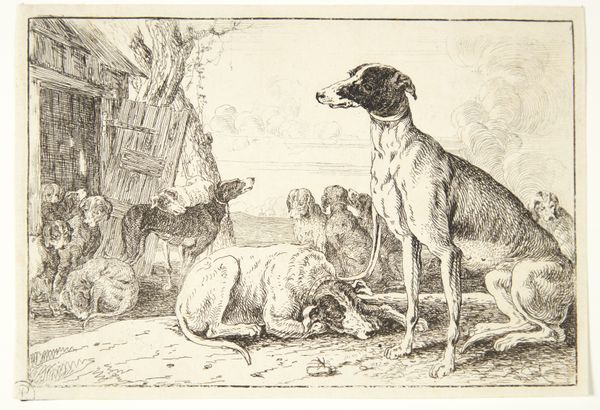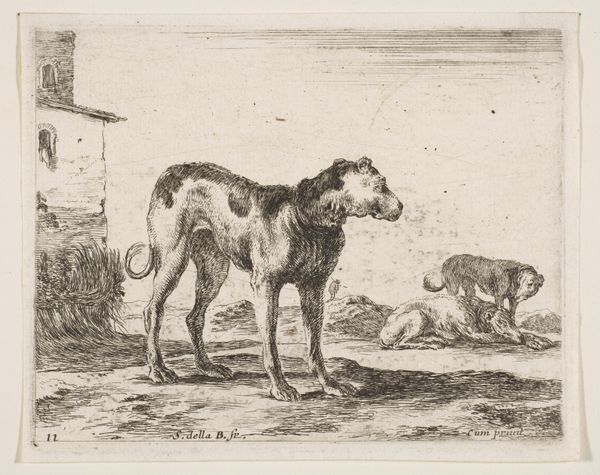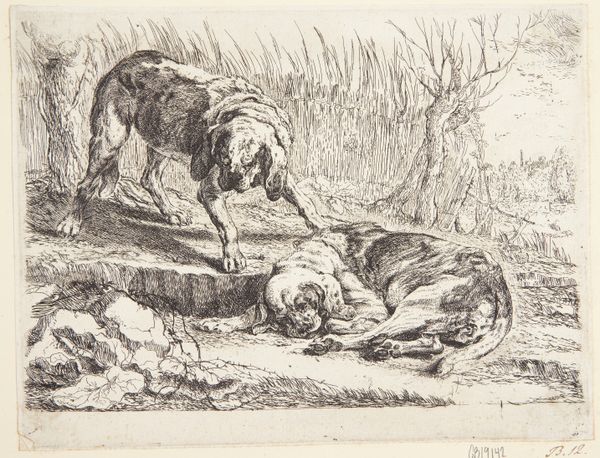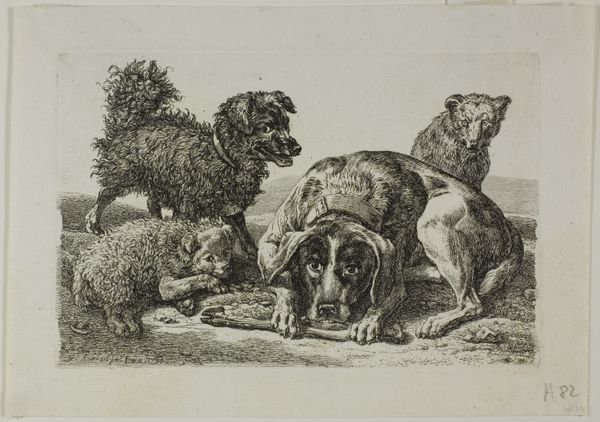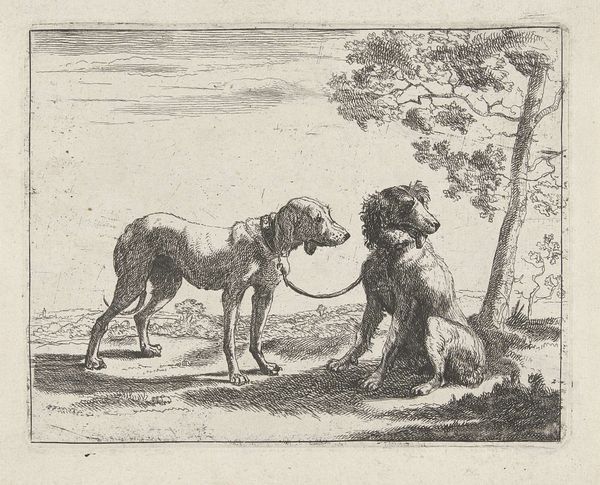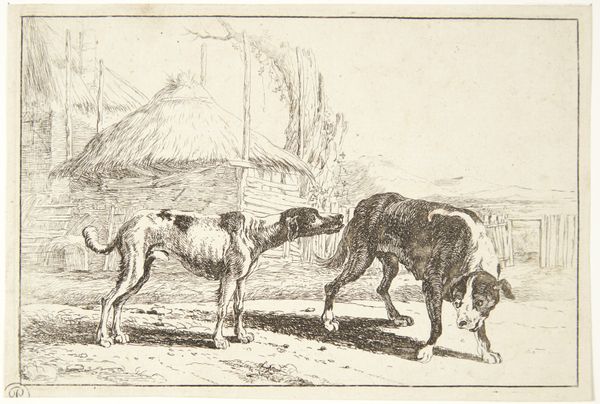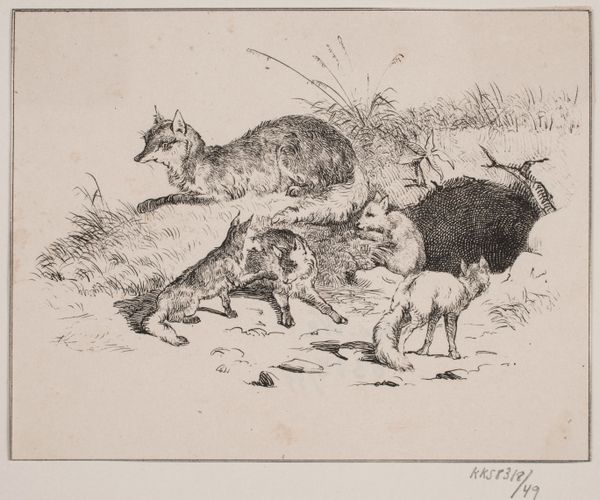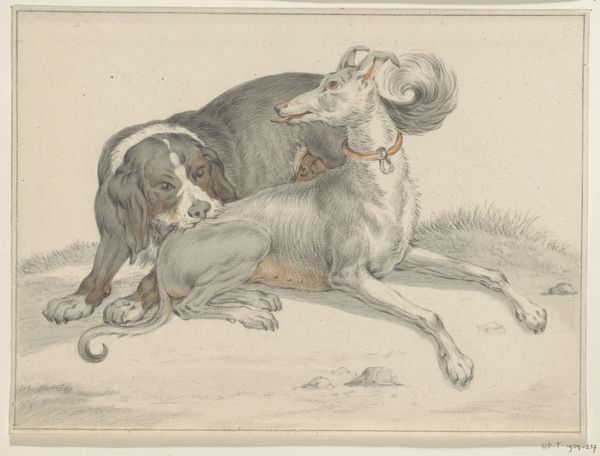
print, engraving
#
narrative-art
#
animal
# print
#
engraving
#
realism
Dimensions: 68 mm (height) x 155 mm (width) (bladmaal)
Editor: So, this is "Titel-vignet til 'Chiens de chasse'" by Christian David Gebauer, created around 1821. It’s an engraving, a print of hunting dogs, and it strikes me how the stark, almost industrial precision of the lines contrasts with the natural scene. What is your perspective on it? Curator: Considering this engraving, I'm immediately drawn to the labor inherent in its creation. The meticulous process of engraving, cutting into the metal plate to create these lines, speaks volumes about the artistic production in the 19th century. Think about the workshop where Gebauer produced this work, the materials available, the role of the engraver... Doesn't this perspective shift your perception? Editor: It does! I was focused on the dogs, their form and the hunt, but you’re right. The creation itself – the materials and labor – tells a different story. Do you see this piece engaging with the shift between craft and industry at all? Curator: Absolutely. The very act of creating a print—an image designed for reproduction—touches upon the evolving dynamics of art in a world increasingly shaped by industrial processes. It prompts the question: How does mass production and accessibility alter the way people perceive and value art? The artist has created an object with clear implications of class and access. Editor: That makes a lot of sense. I had initially seen it as a straightforward representation of hunting, a sort of realism. Now, understanding its material context, I see a complex interplay between artistry, production, and consumption in the 19th century. Curator: Exactly! It highlights how materials and the modes of artistic production aren't just background; they’re central to understanding the artwork’s cultural and historical significance. What we might overlook reveals a world of labor and value. Editor: This conversation really opened my eyes to a completely different dimension of art analysis. Thanks! Curator: My pleasure. Remember, engaging with the artwork's materiality transforms how we interpret its purpose and place in history.
Comments
No comments
Be the first to comment and join the conversation on the ultimate creative platform.


